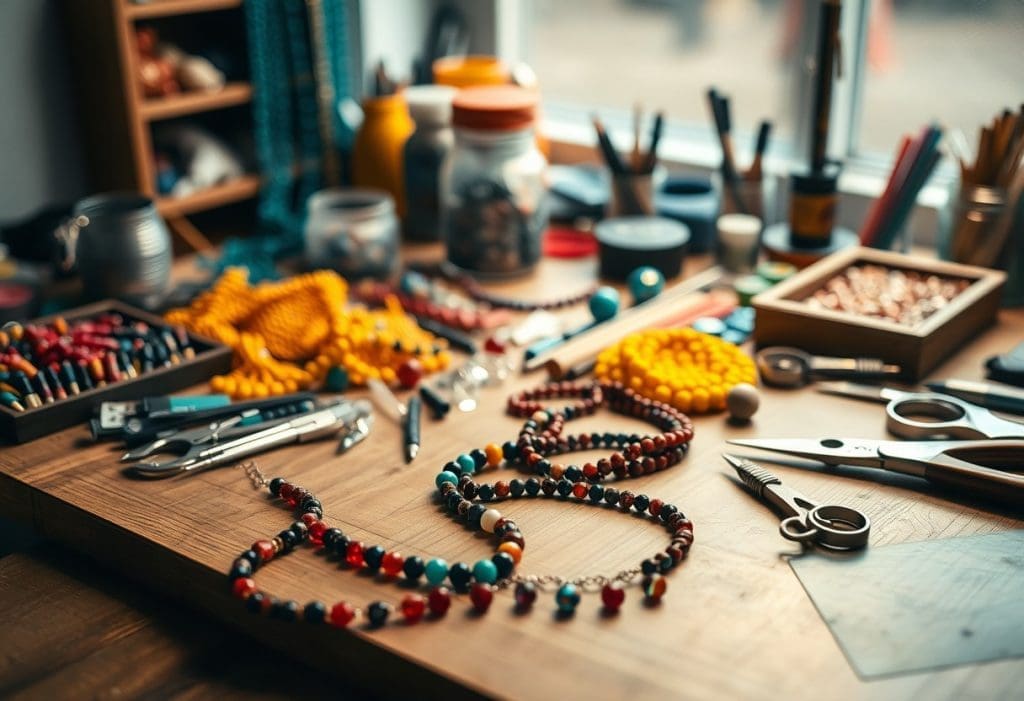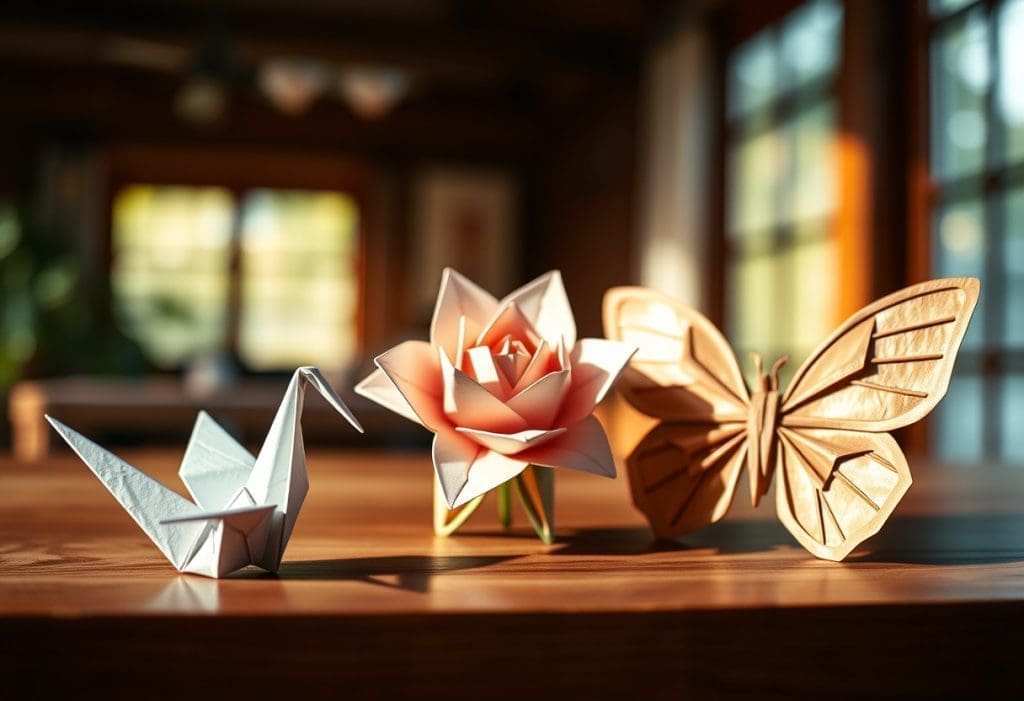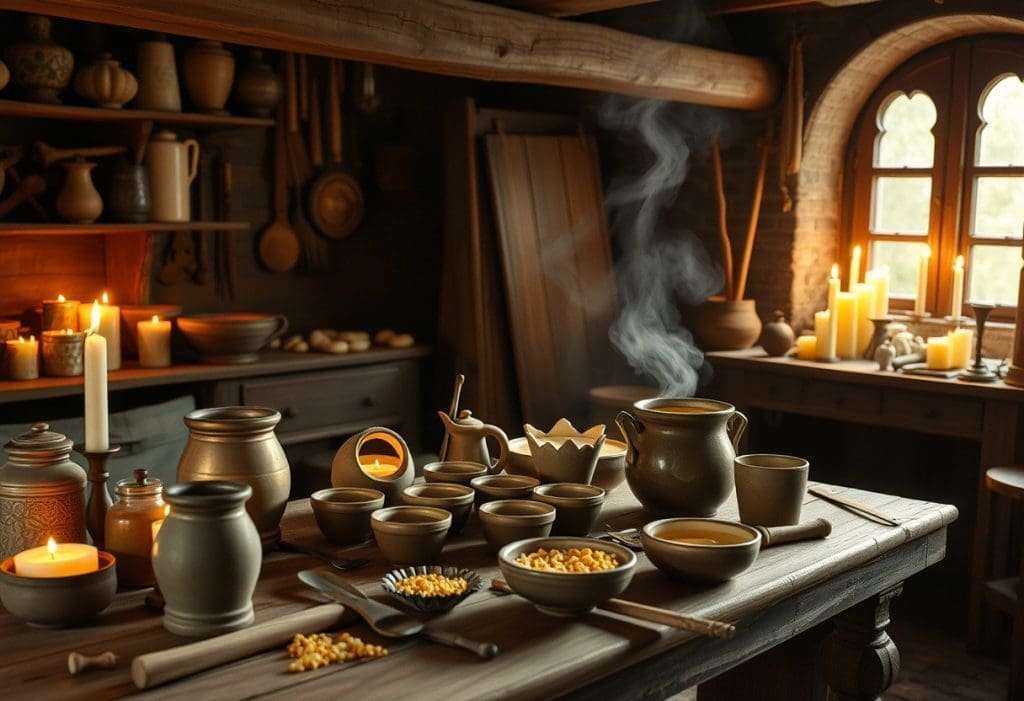Jewelry making is a wonderful way to express your creativity and style.
If you’ve ever wanted to create beautiful pieces that showcase your personality, beading and jewelry making is the perfect hobby for you.
In this post, you’ll find everything you need to know to commence on your crafting journey, from choosing the right materials to mastering crucial techniques.
So, grab your tools and let’s explore the colorful world of beads and beautiful creations!
Getting Started with Beading Basics
The first step to enjoying beading is understanding the vital techniques and skills that will set you up for success.
By familiarizing yourself with fundamental patterns and stringing methods, you can gain confidence in creating your very own jewelry pieces.
Start small with simple projects, and don’t hesitate to experiment as you journey through the colorful world of beads!
Understanding Beading Tools
Against a backdrop of creativity and fun, you’ll need to gather some basic beading tools such as pliers, wire cutters, and a bead mat.
These tools will help you shape wire, cut threads, and keep your beads organized while you work on your projects.
Go for the highest quality tools you can find, because they will greatly improve your experience with beading.
- Pliers: Used for bending and holding wire.
- Wire cutters: Essential for cutting beading wire to the desired length.
- Bead mat: Prevents beads from rolling away while you work.
- Measuring tape: Helps ensure your designs are the right length.
- Threading needle: Aids in stringing beads onto the wire or thread.
Assume that investing in good tools will make your beading projects easier and more enjoyable!
| Tool | Purpose |
| Pliers | Curving and cutting wire |
| Wire Cutters | Cutting beading wire |
| Bead Mat | Organizing beads while working |
| Measuring Tape | Ensuring correct length |
Different Types of Beads
Across a diverse range of materials, beads come in various forms including glass, wood, metal, and gemstones.
Each type of bead holds unique properties that can enhance your jewelry designs.
- Glass beads: Add shine and color to your creations.
- Wood beads: Offer natural warmth and texture.
- Metal beads: Provide a touch of elegance and durability.
- Gemstone beads: Bring individuality and vibrance.
- Plastic beads: Are budget-friendly and come in various shapes.
Assume that exploring different bead types can greatly influence the overall aesthetic of your pieces!
| Type of Bead | Characteristic |
| Glass | Shiny and colorful |
| Wood | Natural and warm |
| Metal | Elegant and durable |
| Gemstone | Unique and vibrant |
Get to know the different types of beads available. This will empower you to make informed choices for your jewelry projects.
As you explore various materials, you’ll discover how specific beads can complement your designs beautifully, creating unique pieces that showcase your personal style.
- Explore various designs to find what resonates with you.
- Experiment with different combinations of beads.
- Consider the environmental impact of your bead choices.
- Stay updated on trends in the beading community.
- Have fun and enjoy the creative process!
Assume that embracing your creativity will lead you to develop your distinct jewelry-making style!
Basic Techniques for Beginners
Assuming you’re new to beading and jewelry making, start by familiarizing yourself with fundamental techniques that will serve as the backbone of your creations.
From stringing beads to finishing techniques, your mastery of these basic skills will help you build confidence and create beautifully polished pieces that showcase your style.
Don’t rush the learning process; each technique will elevate your craft!
Stringing Beads
Beside choosing your beads, you will need to select the right stringing material for your project. The typical materials we see are either thread, wire, or elastic cord.
Explore various stringing techniques, like knotting, which securely holds your beads while ensuring durability and a professional appearance in your designs.
Simple Knotting and Finishing Techniques
You’ll need to learn how to secure your beads and create neat finishes that enhance your jewelry’s overall look.
By practicing these skills, you can transform your pieces from basic to elegant, giving them a polished and professional charm that you can proudly wear or gift to others.
Here is a good tutorial on the most common knotting techniques you’ll need for jewelry making:
When you master the knotting techniques, you can create beautiful closures, ensuring that your hard work pays off with stunning, long-lasting designs.
Exploring Design Ideas
Any jewelry making journey begins with your imagination.
You can explore different design ideas by drawing inspiration from your surroundings and reflecting on what resonates with you personally.
Don’t hesitate to mix various elements, colors, and materials that catch your eye. Your personal signature will make your creations one-of-a-kind.
Inspiration from Nature and Art
Beside seeking out inspiration in everyday life, look around you—nature and art are rich sources for unique designs.
From the colors of a sunset to the intricate patterns in a leaf, every little detail can ignite your creativity (decide what theme speaks to you most).
Art, whether in paintings or sculptures, can also guide you to new perspectives and combinations.
Sketch Your Ideas
One effective way to enhance your design process is by sketching your ideas.
This step allows you to visualize your thoughts, refine them, and assess various arrangements.
Even simple sketches can help capture the essence of what you want to create, bringing clarity to your vision.
In addition, sketching does not require artistic talent—it’s all about getting your ideas on paper.
You can explore shapes, colors, and textures without the pressure of perfectionism.
This visual representation will serve you well as you transition your designs into actual pieces, and it can even become a valuable reference as your skills grow.
Crafting Your First Jewelry Piece
Now that you have your supplies, it’s time to create your very first jewelry piece!
Choose a simple design that excites you, and don’t be afraid to make it your own.
This process should be fun and fulfilling, so take your time and enjoy experimenting with different colors and patterns. Select a project that matches your skill level to boost your confidence.
Steps to Create Your First Piece
Jewelry making can be simplified with a straightforward tutorial to create your first bracelet or necklace.
Start by gathering your beads, stringing material, and tools, then follow these steps:
- Choose your beads and design
- Cut your string to the desired length
- String your beads into the pattern you prefer
- Secure the ends with knots or clasps
Troubleshooting Common Issues
Across your creative journey, you will eventually face challenges while making your jewelry.
It’s entirely normal to encounter issues like beads slipping off or uneven spacing.
Stay calm and be prepared with simple solutions such as using a bead stopper or adjusting your design.
Troubleshooting can turn into a learning experience that strengthens your skills.
If you find that your bracelet feels too loose, try adding another knot to secure it better. Or maybe if your design doesn’t flow as you imagined, don’t hesitate to rearrange the beads.
Learning to adapt is part of the joy of jewelry making!
Expand Your Skills and Creativity
As you get more experienced with beading and jewelry making, you’ll eventually want to take on new techniques and ideas.
Challenge yourself with new projects, experiment with different materials, and embrace unique designs to keep your passion alive.
The more you explore, the more you will develop your personal style and gain confidence in your work.
Join Workshops and Online Communities
Workshops and online communities can be a fantastic way to connect with fellow jewelry makers.
By engaging with others, you will be able to share ideas, gain feedback, and find inspiration that fuels your creativity.
Experiment with Advanced Techniques
When you learn new, more advanced techniques, you will find it rewarding.
Don’t be afraid to push your creative boundaries. It will not only keep your work fresh, but it will also help you discover new passions within the art of jewelry making.
Benefits of Experimenting with Advanced Techniques
| Benefit | Description |
| Creativity Boost | Exploring new techniques can spark fresh ideas |
| Skill Development | Advanced techniques improve your overall craftsmanship |
| Unique Pieces | Experimenting leads to one-of-a-kind jewelry |
| Problem Solving | Complex projects enhance your critical thinking skills |
You’ll want to keep a growth mindset as you explore advanced techniques, because it can be transformative for you.
Don’t hesitate to try more difficult ideas. Each new skill you learn will add to your toolkit and open doors for future projects.
Every expert was once a beginner. Enjoy the process and let your creativity shine!
Advanced Techniques to Try
| Technique | Purpose |
| Wire Wrapping | For creating intricate, detailed designs |
| Bead Weaving | To make delicate patterns and more complex pieces |
| Metal Stamping | Adds personalization to your jewelry |
| Resin Casting | Incorporates unique materials, like flowers or glitter |
Caring for Your Jewelry
Many people cherish their handmade jewelry. If you want to maintain the beauty of the pieces, you’ll have to take great care of them.
By incorporating a few simple habits into your jewelry routine, you can ensure that your pieces continue to shine and sparkle for years to come.
Cleaning and Maintenance Tips
Any jewelry collection benefits from regular cleaning and mindful maintenance.
Here are some tips to help you keep your pieces in pristine condition:
- Use a soft cloth to gently wipe your jewelry after each wear
- Store pieces separately in pouches or boxes to avoid scratches
- Avoid exposing your jewelry to harsh chemicals or perfumes
You’ll better be able to preserve your jewelry’s useful life and appearance by understanding the right way to care for your beautiful new creations.
Troubleshooting Repairs
You’ll find that, by learning a few basic techniques, you can save your jewelry from being forgotten at the bottom of a drawer.
You can easily handle simple fixes like reattaching a loose bead or replacing a jump ring. This will help you keep your favorite pieces in circulation.
A little bit of knowledge goes a long way when it comes to troubleshooting repairs for your handmade creations.
You can use items you likely have at home, such as glue for repairing broken components or pliers to tighten loose connections.
Keep a small repair kit for emergencies, so you can make quick repairs whenever needed.
With a bit of practice, you’ll feel more confident tackling these tasks and ensuring your jewelry stays as beautiful as the day you made it!
Final Words
Beading and jewelry making can be a delightful journey of creativity and self-expression.
You can unleash your imagination by gathering the right materials, learning basic techniques, and experimenting with different styles.
Don’t forget to enjoy the process and let your unique personality shine through your creations.
As you develop your skills, you’ll find endless possibilities to create beautiful pieces that you’ll cherish or share as special gifts. Happy beading!



